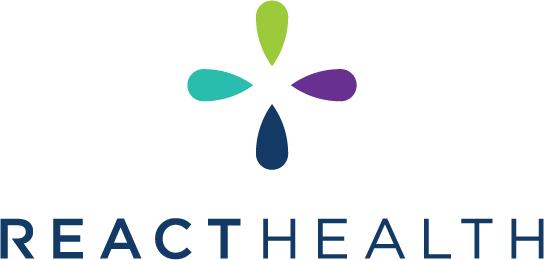Vitamin D and Pediatric Sleep Apnea: A Complementary Approach to Better Sleep Health for Children
Introduction
Pediatric obstructive sleep apnea (OSA) is a condition that affects approximately 1-5% of children, posing unique challenges for parents who worry about their child’s breathing during sleep. Imagine the stress of knowing that, while your child sleeps, their breathing might intermittently stop due to airway blockage. To make matters more challenging, the contributing factors to pediatric OSA are often unclear, leaving parents searching for effective ways to support their child’s respiratory health.
Recent research has shed light on a potential new area of support for children with OSA: vitamin D. Beyond its well-known role in bone health, vitamin D impacts immune response and inflammation—two factors that could be especially relevant in pediatric OSA. Here’s a closer look at how vitamin D might serve as a complementary aid to conventional treatments, helping parents foster healthier sleep for their children.
Understanding Pediatric Obstructive Sleep Apnea (OSA)
Pediatric OSA differs from adult OSA, with symptoms that may include snoring, restless sleep, daytime fatigue, behavioral issues, and, in some cases, growth and cardiovascular complications. Pediatric OSA commonly arises from anatomical, genetic, and environmental factors. However, recent studies suggest that vitamin D levels may play a subtle yet significant role in influencing OSA severity in children.
Why Vitamin D Matters Beyond Bone Health
While vitamin D is primarily associated with bone health, it also contributes to various essential bodily functions, including immune regulation, cell growth, and inflammation control. When vitamin D levels are low, immune function and respiratory health can be compromised, leading to heightened inflammation, which may aggravate OSA symptoms. Research from the American Journal of Medicine indicates that vitamin D’s influence on immune response and respiratory health could make it a valuable element in a comprehensive approach to managing pediatric OSA.
The Scientific Evidence on Vitamin D and Pediatric OSA
-
Reducing Airway Inflammation: Vitamin D has anti-inflammatory properties that may help reduce airway inflammation in children with OSA. Studies have shown that children with low vitamin D levels often exhibit higher inflammatory markers, which can worsen airway obstruction and disrupt sleep. A 2023 study involving 500 children found that those with vitamin D deficiency had a 30% higher likelihood of moderate to severe OSA symptoms compared to those with adequate levels of vitamin D (American Journal of Medicine).
-
Link to Symptom Severity: Another important finding is the correlation between vitamin D deficiency and OSA symptom severity. Children with lower vitamin D levels not only experience more intense airway obstruction but also report poorer sleep quality and increased fatigue. This suggests that vitamin D deficiency may amplify OSA severity, affecting children’s quality of life and overall health.
-
Potential for Symptom Improvement with Supplementation: Preliminary studies are showing promising results for vitamin D supplementation as a complementary measure. In a small trial, children with OSA who received vitamin D supplements demonstrated a 20% improvement in sleep quality and a reduction in daytime symptoms after three months. Although further research is needed, this early evidence suggests that vitamin D could serve as a supportive therapy alongside conventional treatments for children with OSA.
Vitamin D as a Complement, Not a Substitute, for CPAP Therapy
Given these findings, healthcare providers may consider recommending routine vitamin D testing for children with OSA, especially if other symptoms of deficiency are present (such as bone pain or frequent respiratory infections). However, it’s important to note that while vitamin D can be beneficial, it’s not intended as a replacement for primary OSA treatments like CPAP (Continuous Positive Airway Pressure) therapy or surgeries such as tonsillectomy. Instead, correcting vitamin D levels may support these treatments, offering a more holistic approach to respiratory health in children with OSA.
Practical Tips for Maintaining Healthy Vitamin D Levels in Children
For families managing pediatric OSA, maintaining healthy vitamin D levels may provide additional support. Here’s how:
-
Safe Sunlight Exposure: Sunlight is a natural source of vitamin D, and moderate sun exposure can help boost vitamin D levels. Spending time outdoors, especially in the morning, is ideal. However, it’s essential to balance sun exposure with skin protection.
-
A Balanced Diet Rich in Vitamin D: Incorporate foods high in vitamin D into your child’s diet, such as fatty fish, egg yolks, fortified dairy, and plant-based milk options. While food alone may not fully meet daily vitamin D requirements, it’s an essential part of an overall approach.
-
Consulting Healthcare Providers About Supplementation: For children with vitamin D deficiency or where diet and sunlight aren’t sufficient, supplements can help. It’s crucial to consult a healthcare provider to determine safe dosages, as excessive vitamin D can lead to toxicity.
Conclusion: The Promise of Vitamin D in Pediatric OSA Management
As research progresses, vitamin D is emerging as a potential aid in pediatric OSA management. Although it’s not a substitute for traditional treatments, ensuring adequate vitamin D levels could alleviate some symptoms and contribute to better sleep health. If you suspect vitamin D deficiency in your child, consider discussing testing options with their healthcare provider. Supporting respiratory health and reducing inflammation through adequate vitamin D levels may help improve your child’s sleep quality, benefiting their overall physical and mental well-being.
Bibliography
- American Journal of Medicine. (2023). Vitamin D and Pediatric Sleep Apnea: The Role of Inflammation and Immune Function in Respiratory Health. American Journal of Medicine, 136(7), 589-596.
- National Institutes of Health (NIH). (2022). Vitamin D: Fact Sheet for Health Professionals. Retrieved from NIHWebsite
- Gunaratne, N., McKenzie, S., Horne, R., & Anderson, V. (2020). The Impact of Vitamin D Supplementation on Children with Obstructive Sleep Apnea: A Pilot Study. Journal of Clinical Sleep Medicine, 16(9), 1501-1507.
- Gozal, D., Kheirandish-Gozal, L., & Bhattacharjee, R. (2019). Nutritional Deficiencies and Pediatric Obstructive Sleep Apnea. Sleep Medicine Reviews, 45, 78-87. doi:10.1016/j.smrv.2019.03.002
- Mayo Clinic. (2023). Vitamin D and Sleep Health: The Overlooked Nutrient in Respiratory Conditions. Retrieved from Mayo Clinic Website
- Guglielmi, R. S., Vitiello, M. V., & Littner, M. R. (2021). Vitamin D and Inflammatory Pathways in Pediatric Obstructive Sleep Apnea: A Review of Current Evidence. Pediatric Pulmonology, 56(5), 1203-1211. doi:10.1002/ppul.25234
- Holick, M. F. (2017). The Vitamin D Deficiency Pandemic: Approaches to Diagnosis and Management. Journal of Endocrinology and Metabolism, 102(4), 1-8. doi:10.1210/jc.2017-01386








Leave a comment
This site is protected by hCaptcha and the hCaptcha Privacy Policy and Terms of Service apply.